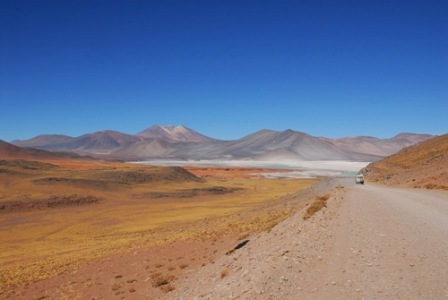Kolkata, April 17 (IANS) In a two-pronged approach aimed at solving India’s energy and water problems, Kolkata scientists have acheived a breakthrough in developing an efficient and bankable hydrogen-based energy source.
“These results are breakthroughs that help pave the way for hydrogen-based power generation,” Abhishek Dey of the Indian Association for the Cultivation of Science (IACS) told IANS.
Environmentalists have hailed the development.
“It is a dream of scientists to see a hydrogen-based economy, we hope for the dawn of the hydrogen age. Hydrogen can be used for transport as well as a fuel,” Chandra Bhushan, deputy director general, Centre for Science and Environment, New Delhi, told IANS.
The scientists hope hydrogen could be used as a source of clean and sustainable fuel to meet ever-increasing global energy needs.
Dey and his team at the IACS department of inorganic chemistry have shown in two different studies that hydrogen can be generated from water in a considerable amount, using two different metals, cobalt and iron, to speed up the reaction.
Hydrogen can be produced from natural gas, alcohol, biomass and other non- renewable material. Splitting of water into oxygen and hydrogen currently remains the core method of hydrogen generation.
Development in this regard has been hindered by affordability and efficiency of the reaction-speeding substance or catalyst. Conventionally, platinum is used. It is efficient, but is also very expensive.
“You need a catalyst that is fast, lasts for a while and will be selective towards its function. This process has been of interest because of increasing fuel prices and environmental concerns,” Dey said.
For the first study published in the American Chemical Society’s Inorganic Chemistry journal this year, the Kolkata team, in collaboration with a research group in Israel led by Zeev Gross, came up with a new cobalt-based catalyst to boost the reaction.
This cobalt catalyst proved to be highly efficient, and by immobilising it on a cheap graphite platform, one could use it to yield hydrogen in a water-based environment.
“We have shown that the cobalt catalyst immobilized on graphite electrode can catalyze the reaction very efficiently, from water obtained from local sources without requiring pretreatment, and even in the presence of oxygen,” Dey said.
According to Dey, one can use water from most local sources and without any pre-treatment.
“You can just filter the particulates out and use that water and get hydrogen out of it,” Dey said.
Encouraged by the results of the cobalt-based study, the team also examined an iron (1,000 times more abundant than cobalt)-based system for its catalytic properties. The projected turnover of the iron catalyst is around 80 litres of hydrogen per second per gram of the catalyst, a figure so far not reported in any study.
“To the best of our knowledge this is possibly the highest electrocatalytic hydrogen generation rate reported so far.
“In addition, iron can be stuck to the surface of very cheap carbon electrodes conventionally used in domestic zinc-carbon dry batteries. Profuse evolution of hydrogen gas was observed,” said Dey, of the second study published in the American Chemical Society’s Catalysis journal.
Furthermore, the research could also prove to be a tool to tackle a water crisis as pure hydrogen generated using these catalysts, from sea or river water, when used in a fuel cell or a combustion engine, will produce pure water, according to Dey.
The next step for Dey and his team is trying to scale up the lab process to judge its commercial viability.
Chandra Bhushan said challenges remained, in extracting power from hydrogen: “It should be affordable and one has to think about its transport, management and storage,” Bhushan told IANS.
(Sahana Ghosh can be contacted at [email protected])
The opinions, beliefs and viewpoints expressed by authors, news service providers on this page do not necessarily reflect the opinions, beliefs and viewpoints of Hill Post. Any views or opinions are not intended to malign any religion, ethnic group, club, organization, company, or individual.
Hill Post makes no representations as to the accuracy or completeness of any information on this site page.


